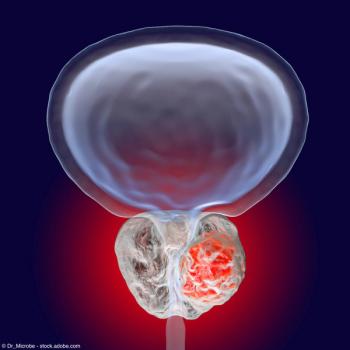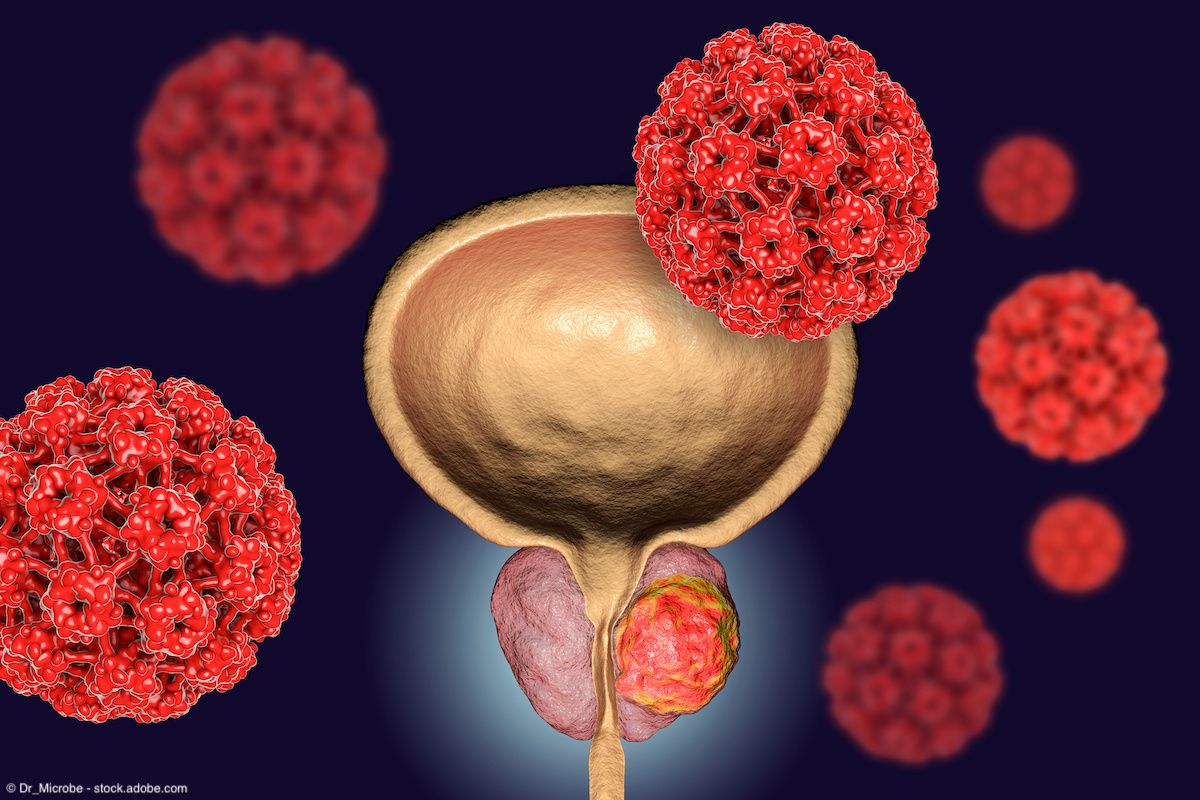
Prostate Cancer
Latest News

Latest Videos

CME Content
More News

The panelists examine the challenges and limitations they've faced when using the Gleason score for risk assessment in prostate cancer patients, while also highlighting how biomarker testing has informed and guided their treatment strategies.

This discussion explores the differences in the effects of abiraterone formulations when combined with prednisone or methylprednisolone.

This discussion provides an overview of abiraterone and the key differences between micronized and non-micronized formulations, including considerations for choosing between the two formulations.

"The patients in these networks that were treated with SBRT certainly lived in areas with increased incomes," says Michael Stencel, DO.

Experts on prostate cancer discuss current unmet needs in the therapeutic landscape and outline treatment considerations for patients receiving androgen deprivation therapy.

Stephen Freedland, MD, discusses the role of GnRH agonists and antagonists on improving cardiovascular outcomes in patients with prostate cancer.

"The number of treatment centers that are offering stereotactic body radiation [grew] over the course of the study," says Michael Stencel, DO.

Key opinion leaders discuss considerations for sequencing androgen receptor-targeted therapies in metastatic castration-resistant prostate cancer, evaluating their benefits in first-line versus second-line treatment settings.

Key opinion leaders explore strategies for managing common side effects associated with metastatic castration-resistant prostate cancer (mCRPC) treatments, including androgen receptor-targeted therapies.

Medical oncologists explore risk stratification strategies for newly diagnosed patients with prostate cancer, emphasizing the significant role of the Gleason score in diagnosis and prognosis.

The key opinion leaders explore risk factors for prostate cancer, detailing both general risk groups and high-risk populations more susceptible to developing the disease.


“This study is a breakthrough because it is the first trial to show that a non-hormonal drug can induce durable complete remissions in recurrent prostate cancer patients with BRCA2 mutations—one of the most aggressive subtypes of this disease,” says Emmanuel S. Antonarakis, MD.

Experts on prostate cancer discuss the relationship between prostate cancer and cardiovascular disease, highlighting ongoing research for safer treatment.

Focusing on castration-resistant prostate cancer, the panel reviews treatment options for patients with metastatic and nonmetastatic disease.

The phase 1 trial is assessing the safety and tolerability of MOMA-313 as both a monotherapy and in combination with olaparib in patients with HR-deficient advanced or metastatic solid tumors.

Key opinion leaders explore the role of androgen receptor-targeted therapy in mCRPC.

Key opinion leaders explore the expanding treament landscape for mCRPC.

"It looks like there are a lot of practices that are reticent about employing same-day discharge," says Brian R. Lane, MD, PhD, FACS.

Prostate cancer management experts share their clinical insights on selecting appropriate serum, urine, and/or tissue biomarkers, highlighting specific scenarios that warrant each type of test.

The panel emphasizes the crucial need for swift biomarker and genetic testing to facilitate timely and effective patient care in prostate cancer management.

The panel outlines combination therapy options for patients with advanced prostate cancer and discusses the potential benefits of intensification of androgen deprivation therapy.

Experts on prostate cancer discuss factors to consider while making treatment decisions for patients with nonmetastatic castration-sensitive prostate cancer.

"We've really found that [same-day discharge is] a reasonable option and something that many patients are really pleased by," says Brian R. Lane, MD, PhD, FACS.

The phase 1/2 trial is assessing the safety, tolerability, radiation dosimetry, and preliminary anti-tumor activity of 225Ac-rhPSMA-10.1 in men with mCRPC.























